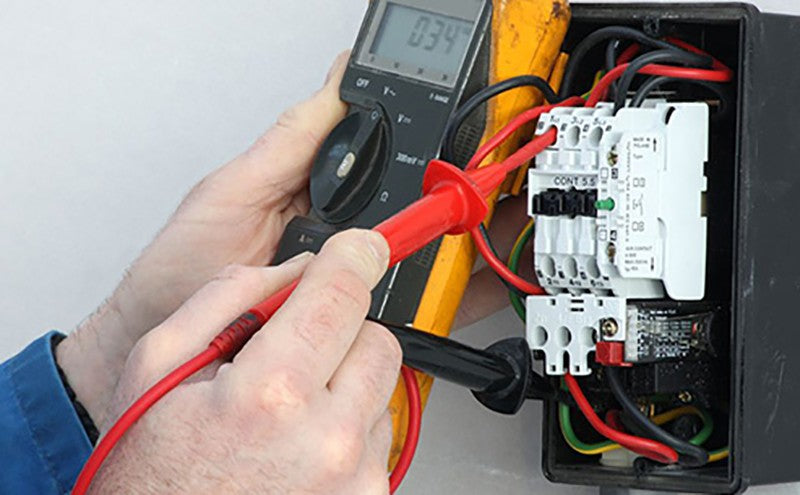
|
Main content: |
1.Benefits of monitoring the battery soc
The benefits of monitoring the battery soc include reporting battery time to the user, providing better power management, the ability to automatically save user data before the battery runs out, and the ability to obtain as long an uptime as possible.
For mobile computing, sequential turn-offs are of fundamental importance -- every laptop PC has a battery soc meter, and 90 percent of them use a battery chip. The increase in running time is due to power management, predictive accuracy of turn-off breakpoints, and turn-off voltage based on changes in battery impedance to capacity.
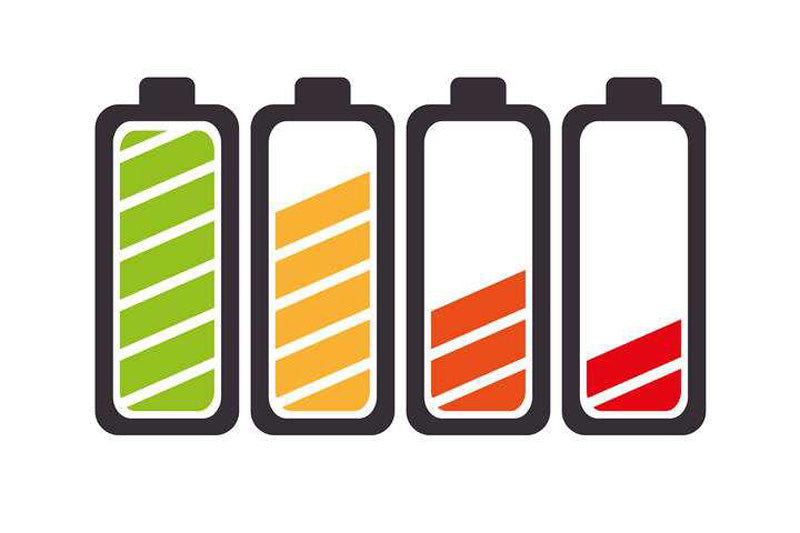
Example of running time comparison -- comparison of battery soc meter off and OCV off breakpoints
- Systems without accurate gauges simply turn off at a fixed voltage
- Smart phones, tablets, portable medical devices, digital cameras, etc., require backup battery power to complete the shutdown task
The shut-off meter used in this comparison will calculate the remaining capacity and vary the shut-off voltage until there is exactly spare capacity in all cases;Generally use 10 mAH reserve capacity; And changes with the temperature and aging condition of the battery;
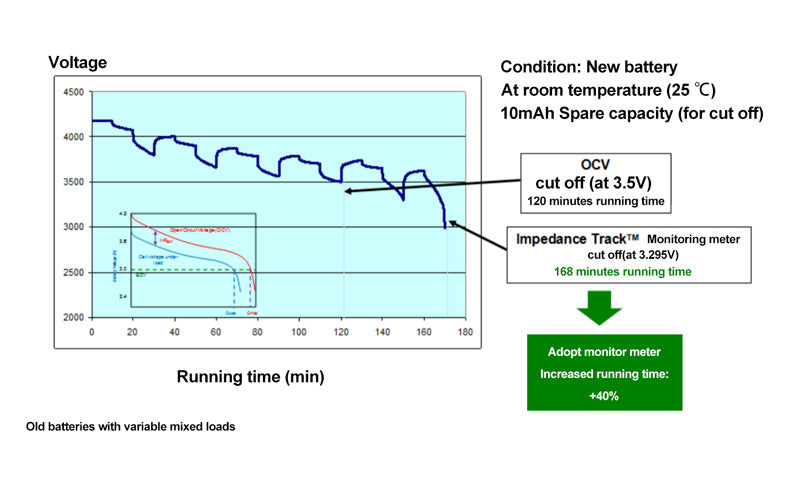
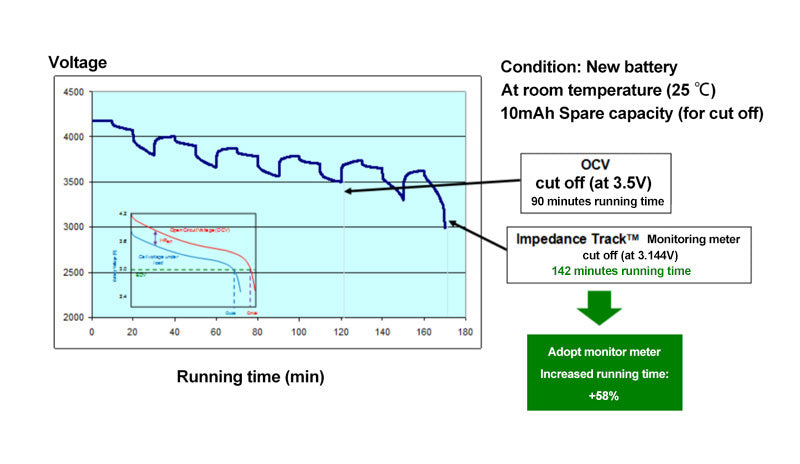
This is the same thing in this figure, this is not a new battery, this is a relatively old battery. It was also put into shutdown and shut down at 10mAh capacity, in which case its time increased by about 58%.
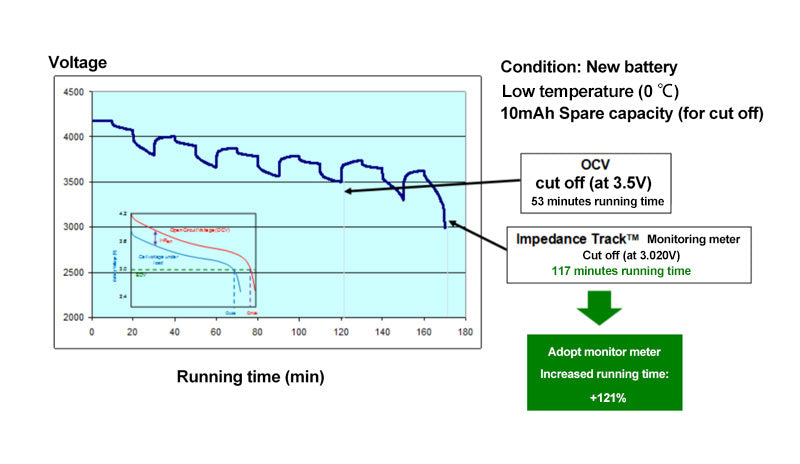
This is the case at low temperatures, where the effect of prolonged time is more pronounced because the internal resistance increases significantly at low temperatures, extending the time used here by 121%.
Its load current varies even more under these test conditions, in which case it can even be extended to 290%. Why? Because if at low temperature in this place it will shut down, this time is quite short, just began to discharge did not put long to shut down, so if the use of impedance tracking technology, can continue to put more than 80 minutes to shut down, because as long as the retention of 10mAh capacity shut down is enough, so this can prolong a lot of time. It is not absolutely based on the voltage to make a rigid index to decide whether to shut down, is based on the remaining capacity to decide whether to shut down, so only using impedance tracking technology can calculate how long to shut down, so using impedance tracking technology can greatly improve user experience. User experience is an important factor in expanding sales and providing competitive advantage in today's portable consumer electronics.
Battery soc monitoring-- Advantages of battery soc monitoring meter technology
-- Dynamic (learning) ability
Temperature variability in application: The meter of battery soc takes into account changes in battery impedance due to temperature rise/fall; Thermal simulation is introduced in the monitoring battery soc to adjust the spontaneous heat.
Load changes: The meter of battery soc tracks voltage drops due to high load spikes;
-- Aging battery
The battery soc monitor has the ability to adjust the available capacity changes caused by battery aging;
- Prolong the running time
The lower termination voltage can be used with the help of a monitor based on a battery level monitor;
- Flexibility
Battery characteristics analysis; The host system does not need to perform any calculations or monitoring algorithms;
Just described is more intuitive to think of some advantages, actually inside the impedance tracking technology along with the continuous improvement of the algorithm in the using process of the temperature of the battery constantly changes in impedance caused by up and down to join the temperature model estimates, thermal simulation was introduced to regulate the batteries, and the use of process of also did a study to the change of load, Means that each user to a electric equipment, under the habits of its current there is a rule, the change of the impedance tracking chip during the process of using it will slowly to learn the rules, master due to load changes caused by the voltage drop, the pressure drop for capacity calculation is actually to consider, also want to consider these factors, Of course, as mentioned before, the impedance tracking of aging batteries is used to calculate the impedance of the batteries in real time, and it does not need to estimate the aging batteries with a model. It is measured impedance, so the impact of aging is relatively small. Because of its precise computing capacity, it can be used for maximum length of time, as you can clearly see from the previous pictures. With the impedance tracking chip, our host system does not need any algorithm to calculate the capacity of the battery, just need to simply read the specified register can get the capacity. With impedance tracking technology you can also conduct a thorough battery analysis, such as the aging degree of the battery, the health of the battery... And so on.
2.The meaning of unused battery capacity is not given
Battery cost: average cost per 100mAh capacity is 1 $;
Lower termination voltage (TV) = larger battery capacity;
For new batteries, reducing the TV by 500mV increases capacity by about 5% → saving about 5 US $for 1500mAh batteries;
For aging batteries, reducing TV by 500mV increases capacity by about 50% → saves about 50 US $(for 1500mAh batteries) and extends running time;
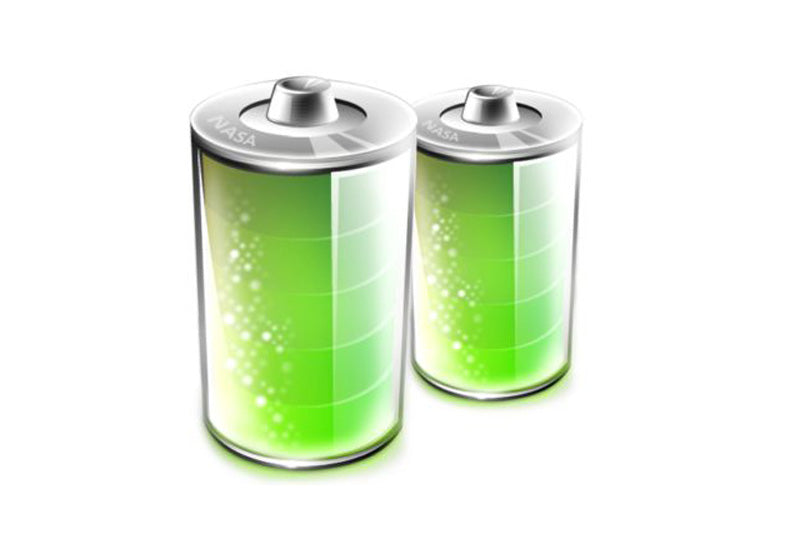
This provides cost saving opportunities for manufacturers while extending battery life for end users;
What's the other advantage? With the use of impedance tracking technology, the capacity of the battery can be more accurately calculated, in the case of more accurate battery capacity calculation, in fact, this meter of battery soc can bring you cost savings. In terms of batteries, it usually costs around 2$ per 100mAh. For example, due to the reduction of discharge termination voltage to obtain a larger battery capacity, the TV value here is the discharge termination voltage, reducing 500mV can increase the capacity of about 5%, for example, the original reduction of 3V, the capacity of 500mV can increase 5%, for the 1500mAh battery, it actually saves about 5%. 75mAh capacity, this time to help you save dollars.
However, as the battery aging rate increases the capacity of 500 mv, it is not 5%, but 50%, so the savings is about $1, of course, this is for 1500 mah capacity, with the battery capacity is more and more big, because now smart consumption is more and more high, so it will be more and more big, then the save money, more and more.
3.Losses due to inaccurate monitoring
-- Assuming that the customer charges and discharges once a day → 3 months of service time = 90 days, about 90 times of charge → the internal impedance of the battery almost doubles → battery aging occurs;
-- Monitoring battery soc without impedance tracking → inaccurate monitoring results due to gradual aging of batteries → much shorter running time and even system crash;
-- The carrier's battery warranty may be one or even two years;
-- The customer returns the whole equipment due to the fault monitoring results → the return during the warranty period will cause the company to suffer economic losses;
-- Impedance tracking based monitors can extend battery life and avoid some costly returns due to failure monitoring results;
So customers in the design system can't light when considering the much cost of a single chip, also should consider how to it as you choose the battery reduces the cost, because of the impedance tracking technology, the accurate battery soc chip, choose the battery capacity can be a bit more precise, don't need to have too much allowance. As a result of monitoring is not allowed to bring losses to customers this in real life there are many. For example, if the customer daily charge and discharge, three months time is about 90 days, charging about 90 times, the battery internal resistance is doubled, the said 100 times when the battery is aging 1 times. if you don't have a meter by impedance tracking battery soc, the impedance of the battery at that time doubled, will cause the power calculation error. Because its original coulometer is in accordance with the relatively small internal resistance to calculate electricity, the actual internal resistance has increased by 1 times, so it calculated the internal resistance is bound to have a relatively large error. What kind of situation does it create? It will tell you more running time, but the actual running time is much less than this, the result is suddenly shut down, the influence of the sudden shutdown of the system is very big, our laptop computer suddenly shut down may cause collapse of the system, and the feeling of the user is in the use of the battery greatly shorten the time, The shortening may not be due to aging batteries.
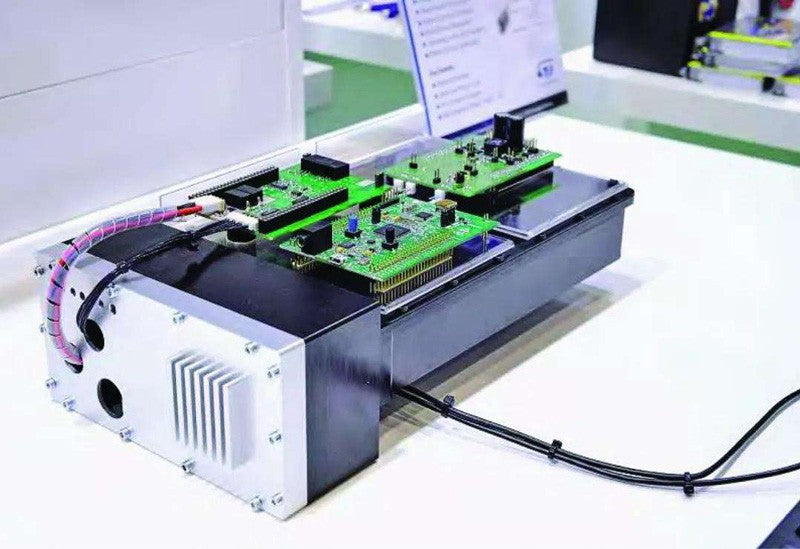
The guarantee of the battery may be 4 to 10 years, so the system suddenly crashes after the place has only been used for 3 months, and the customer may ask for return of the battery, which will cause economic losses to the company. Therefore, this is an example of economic losses caused by inaccurate battery soc coulometer.
4.Conclusion
So in the case of portable battery products, accurate monitors for battery soc are no less important for achieving long running time than reducing the power consumption of design solutions and adopting robust batteries. Because you want a robust battery, you need more mAh, which actually adds to the cost. If you use an accurate battery soc coulometer to maximize the capacity of the system, you can use relatively low capacity batteries, which can lead to cost savings.
There are many coulometer schemes available, and they are generally based on a compromise between voltage monitoring and Coulomb counting, rarely using pure voltage monitoring or coulomb counting.